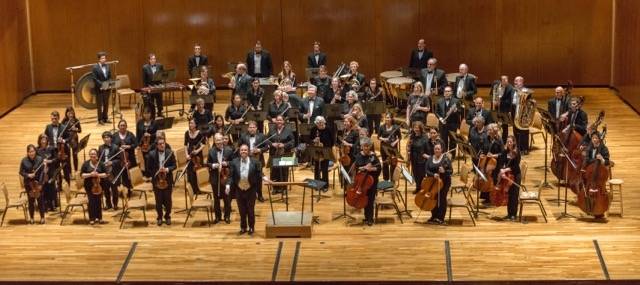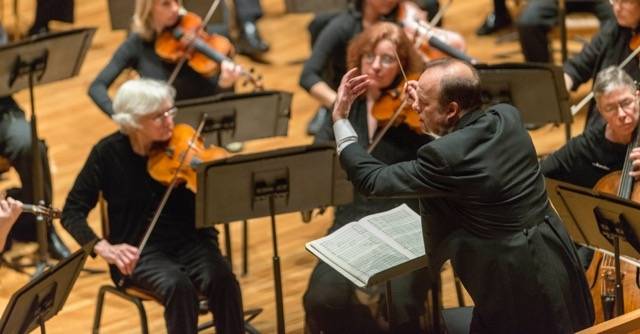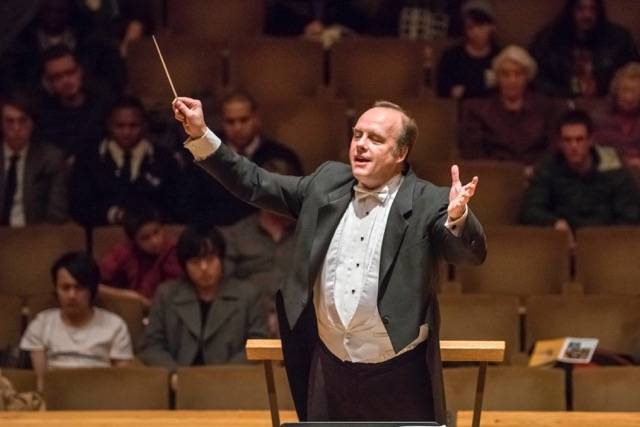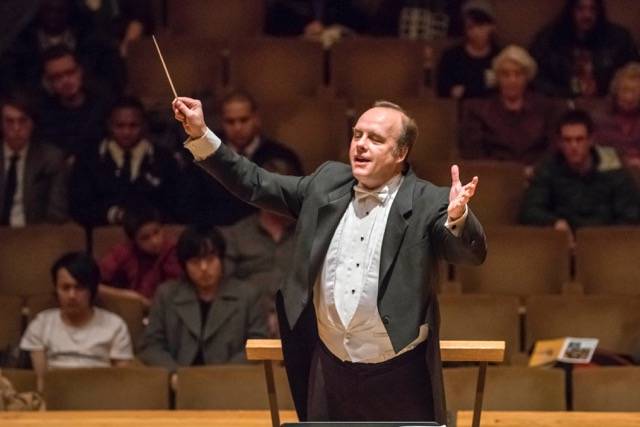In 1959, two Champaign Unit 4 music teachers, Martha Wendt and Gilbert Papp, decided our community needed a full-time symphony orchestra. To help facilitate their dream, they contacted a kindred spirit from the world of television, meteorologist W. J. Roberts. Known as “Mr. Roberts” to his viewers, the TV personality had a high-visibility profile in the area; this helped moved things along. Their labors would culminate, in the fall of 1960, with the first concert of what we now call the Champaign-Urbana Symphony. Fifty-five years and going strong, the C-U Symphony, as it is affectionately known, is preparing for a January 31st concert that should bring back some memories of their very first year.
So many symphonies from medium-sized communities, even those with universities, have failed over the years. The Champaign-Urbana Symphony has not, and much the credit goes to its early quality and the people who organized it. They waited almost a year for their first concert and did not rush into performance without some serious preparation. The carefully organized fundraising, led by Mr. Roberts, was a considerable success. Roberts’ semi-celebrity status and personal charm really gave the Champaign-Urbana Civic Symphony Orchestra, as it was called then, a financial leg up.

The connection to the Champaign school district gave the orchestra rehearsal space at Champaign High School (now Champaign Central—Centennial was not built until 1963), and negotiations with the University of Illinois School of Music proved even more fruitful. Smith Memorial Hall, where major University of Illinois concerts were performed before 1969, was made available to the new orchestra for their concerts.
Yet, the School of Music proved to be even more bountiful, as faculty member Bernard Goodman accepted the position of Conductor. His prestige and musical talents were enormous, and, as head of the University of Illinois student orchestral ensembles, he had access to student and faculty talent.
As a former member of Cleveland Orchestra and a founding member of the Walden Quartet, Goodman was an “A-list” musician of national reputation. He would hold the position of conductor until his retirement in 1974.
Two factors led to early and continued success of what we know today as the Champaign-Urbana Symphony: the status of its University of Illinois connections and Bernard Goodman’s leadership. But, the early fundraising of that first symphony board—which secured significant donations from local businesses and patrons of the arts—guaranteed that the orchestra’s musicians would be well prepared for their first concerts: they were paid for rehearsals as well as concerts.

One nagging factor that has plagued smaller-venue ensembles is paying the musicians for rehearsals. Many of these ensembles have talented musicians, but if they are not paid rehearsals, there is little incentive to show up for rehearsals. This lack of practice can result in underachieving performances, painful to the ear. Goodman was convinced by Wendt and Papp, who were members of the American Federation of Musicians, that this orchestra would not perform without proper funding for paid rehearsals at a set wage schedule. That was a huge factor in bringing Bernard Goodman and the cream of local musicians on board.
In 1962, the Symphony Guild was established to give fund raising and community support a firm foundation behind the C-U Symphony, so that there would be no question as to whether the next concert or season is possible. Their success speaks for itself.
Their first concert on October 20, 1960 was a major success. Urbana High School students served as volunteer ushers, and the orchestra’s program at Smith Hall included 19th and 20th century works. The program began with Berlioz’s Roman Carnival Overture followed by Beethoven’s Piano Concerto #5. The highlight of the second portion was the suite from Stravinsky’s The Firebird.
In 1969, the Champaign-Urbana Symphony moved to the Krannert Center’s superb acoustics of the Great Hall (now the Foellinger Great Hall). The Champaign-Urbana Symphony would soon be designated the Professional Orchestra in Residence at the Krannert Center and has never missed a season. The seasons have averaged 5-6 concerts and 3-4 youth concerts. WILL FM broadcasts their concerts after their live performances, and in 1992 National Public Radio included their concert of African-American composers on the Performance Today series. In a typical season, some 60,000 people will hear the Champaign-Urbana Symphony concerts live and on the radio from the regular season concerts and youth concerts.

The January 31st concert in the Foellinger Great Hall of the Krannert Center will be led by current Music Director and Conductor Stephen Alltop (pictured above). His program has a taste of local history in it, including a Stravinsky ballet. This time Petrushka is on the program, as is Beethoven’s Piano Concerto #5. Soloist Ran Dank will bring us back to one of the great piano concertos of the 19th century and one of the works that put the Champaign-Urbana Symphony on the map.
For further information go to krannertcenter.com, or call the Krannert ticket office at (217) 333-6280.
Photos courtesy of Champaign-Urbana Symphony.








